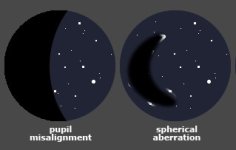oldtimer88
Active member

Hi - this may be a somewhat elementary question but I wasn't able to find a consistent answer on other sites and other threads.
Thanks in advance.
Is there a correlation between blackouts or an 'unforgiving' eye box and the size of the objective lens? While this may be different for everyone since all faces and hand holding positions are different, assume that the person is constant and they are looking through various models in both the 32mm and 42mm, would you bet that they have more blackouts on the smaller or larger objective?
I seem to have issues with the smaller objective bins. I initially believed it was from the small ocular lens and small/thin eye cup which barely allowed the length of my eye and eyelashes to fit within the rubber eye cup.
Any insight would be appreciated as I don't want to take unnecessary risk when buying another pair of bins online that I have not tried...
Thank you
Thanks in advance.
Is there a correlation between blackouts or an 'unforgiving' eye box and the size of the objective lens? While this may be different for everyone since all faces and hand holding positions are different, assume that the person is constant and they are looking through various models in both the 32mm and 42mm, would you bet that they have more blackouts on the smaller or larger objective?
I seem to have issues with the smaller objective bins. I initially believed it was from the small ocular lens and small/thin eye cup which barely allowed the length of my eye and eyelashes to fit within the rubber eye cup.
Any insight would be appreciated as I don't want to take unnecessary risk when buying another pair of bins online that I have not tried...
Thank you







